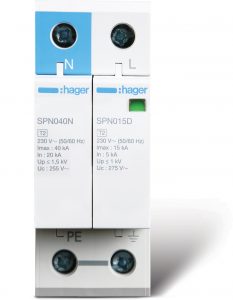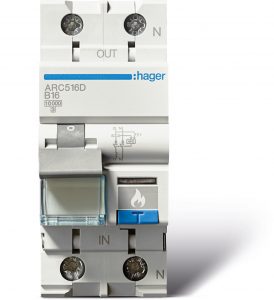
Distribution boards in domestic premises
From February 1st, all distribution boards should comply with I.S. EN 61439-1 and I.S. EN 61439-3 within domestic premises. All wall-mounted distribution boards must be mounted at a height NO greater than 2.15m from the floor to the top surface of the highest protective device. In a household or similar dwelling, the main isolator must interrupt both live and neutral conductors of a single-phase supply. Where the enclosure for the main overcurrent device in the ESB Networks metre cabinet is fitted with Earth and Neutral terminals, the requirement for double pole isolation also applies.

Protection against transient overvoltages
Protection against transient overvoltage is required where the consequence results in serious injury to, or loss of, human life; the interruption of public services/or damage to cultural heritage; the interruption of commercial or industrial activity or, if large numbers of co-located individuals are affected. In all other cases, a risk assessment is required. If a risk assessment is not undertaken, then transient overvoltage protection is required. For a single dwelling unit, assessment needs to be made by all parties whether the total value of the installation and equipment justifies the inclusion of such protection.

Residual current devices on lighting circuits in domestic premises
Additional protection with an RCD using a rated residual operating current not exceeding 30 MA should be provided for A.C. final circuits supplying luminaires within a domestic setting. An overcurrent protective device rating of 6A for 1.5mm copper cable and 10A for 2.5mm cable should also now be used in lighting circuits. It is recommended to use a consumer unit with a ‘dual RCBO’ arrangement. Lighting and socket circuits should not be mixed on the same RCD.

Selection of RCD types
The designer or installer needs to select the appropriate RCD device for a specific application from:
• Type AC – general purpose use (not recommended for new installations)
• Type A – equipment incorporating electronic components
• Type F – equipment with frequency-controlled speed drive
• Type B – electric vehicle chargers, PV supplies

Protection against fire caused by electrical equipment
I.S.10101 introduced a new protection device – an Arc Fault Detection Device (AFDD), designed to detect and disconnect dangerous electrical arcs in both fixed wiring and connected equipment which could be a fire source. Fitting an AFDD to IEC 62606 is recommended for additional protection. The AFDD should be placed at the origin of the circuit being protected, e.g. in sleeping premises, locations where stored or construction materials are fire risks and locations housing irreplaceable goods.
T: +353 (0)1 883 5844
E: customer.service@hager.ie
www.hager.ie











